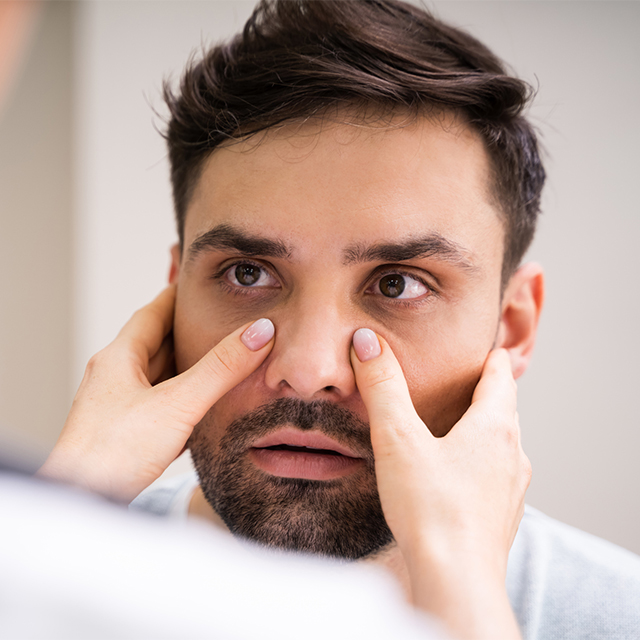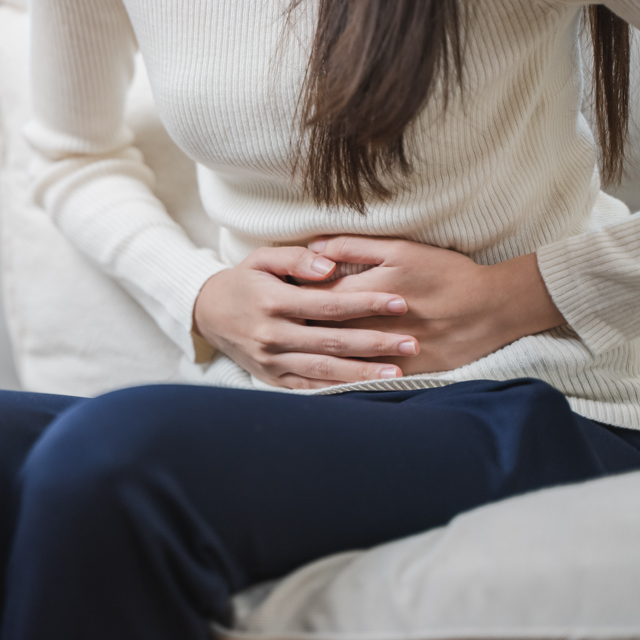This study looked at a certain type of tiny particles in the air.
Sinusitis means inflammation in the sinuses. Someone with sinusitis will feel congested and have a runny nose, mucous dripping into the throat (postnasal drip), headache, a loss of sense of smell or taste, and/or snoring. Chronic sinusitis refers to feeling this way for 12 weeks or more.
A recent study, published in January 2024 in the journal Allergy, explored the role of certain types of air pollution in chronic sinus inflammation.
“We think that air pollution could be a significant contributor to some chronic sinusitis,” said Dr. Naweed Chowdhury, an ear-nose-throat (ENT) specialist and skull base surgeon with Vanderbilt Otolaryngology. He and four other Vanderbilt specialists authored the study.
Indeed, the study found that the more exposure someone with chronic sinusitis had to certain tiny particles in the air, the more inflammation in the cells of their sinuses. More inflammation means more severe and uncomfortable symptoms.
The study focused on “fine particulate matter,” how air quality experts define tiny particles that are 2.5 microns or smaller in diameter. (One micron is one one-thousandth of a millimeter – too small to see without a microscope.) These tiny particles in the air can be many different chemicals or other substances. Particles this small can be inhaled into the lungs and can pass into the human bloodstream.
Who is most sensitive to this type of air pollution?
Chowdhury said this study suggests that the people most likely to have chronic sinusitis are those with high exposure to these particles in air pollution. That might be due to their work – “people working in factories, people who are working near smokestacks and more industrial areas,” he said. “Also, people who live in urban areas who are around a lot of car traffic and near highways have reason to potentially be more concerned about their environmental exposures.”
It’s too early to say how people can best protect themselves from this type of pollution, Chowdhury said. “There isn’t a lot of great evidence for the impact of air purifiers, but I think if there’s concern, it’s not a bad idea to consider having one, especially if you think that you may have high exposures at home.” That doesn’t help with exposure to pollution in outdoor air once you venture away from home, of course.
What’s more likely to help people’s health in the long term, he said, are public health and environmental policies: “Things like cleaner energy, reducing reliance on fossil fuels, that we know contribute to this particular kind of air pollution. I think addressing that on a wider level will probably be the ultimate solution.”
More research may help identify how sinus tissues react, on a cellular level, to certain types of levels of air pollution. That in turn may eventually lead to developing medications that can offer people relief from their symptoms, Chowdhury said.
What can someone with chronic sinusitis do to protect themselves?
If someone has symptoms of a sinus infection that last longer than what’s normal for them – still feeling the effects even after finishing their antibiotic prescription, for example, or feeling weeks later like they never fully recovered from it – they should first talk to their primary care provider. That nurse or doctor may decide the next step is sending them to an ear-nose-throat doctor.
As such a specialist, Chowdhury said, “We have some fancier equipment, such as nasal endoscopes, that we use to look inside patients’ noses, and we can often see things that aren’t easily visible just when your primary care doctor’s looking at their nose. So we can often catch things early.”
If the problem is treated fairly early – as opposed to ignoring it for months – “we can treat it with medications only, and people will do okay. But when it lingers beyond a certain period of time, it makes it really difficult for medications alone to solve it,” Chowdhury said. “And then we’re talking about surgery.”
Treating an ongoing sinus problem earlier rather than later might prevent polyps, small growths inside the nose or sinuses. They’re not painful, but polyps seem to develop after someone has had long-term swelling or irritation in the sinuses. If polyps grow too large or if there are too many of them, they can make sinusitis symptoms worse, block the nose, or lead to facial pain. If too many polyps develop in the sinuses, they may require surgery to relieve symptoms.
How can you know how much air pollution you’re exposed to?
Using air purifiers can clean the air in your home, but there’s no way to monitor or clean the air outside your home in your immediate neighborhood.
However, many weather apps for mobile phones track air quality. Some websites also track air quality in large areas of Middle Tennessee and Nashville. For example, AirNow is a federally funded website that lets you monitor air quality in your city.
The National Weather Service tracks the Air Quality Index, a color-coded daily report of air quality throughout the U.S.
For those with chronic sinusitis – or other respiratory problems, such as asthma – this information can help you judge whether your local air quality is healthy or hazardous for you on any given day. Among other measures, these online tools offer daily reports of “fine particulate matter,” often labeled PM2.5 – the tiny particles that Chowdhury’s research studied.

Personalized care for sinus issues
The otolaryngologists (ENT specialists) at Vanderbilt Bill Wilkerson Center offer comprehensive care for nose and sinus issues. Their expertise can help you breathe easier.




